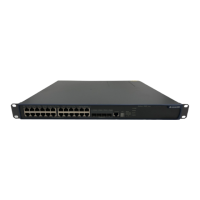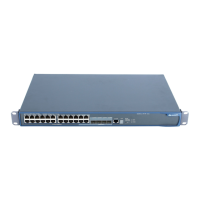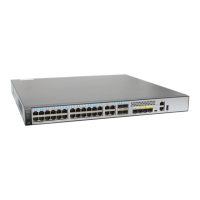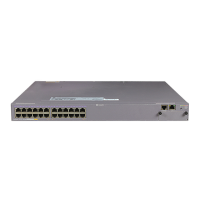Operation Manual - DHCP
Quidway S5600 Series Ethernet Switches-Release 1510 Chapter 2
DHCP Server Configuration
Huawei Technologies Proprietary
2-1
Chapter 2 DHCP Server Configuration
2.1 Introduction to DHCP Server
2.1.1 Usage of DHCP Server
Generally, DHCP servers are used in the following networks to assign IP addresses:
z Large-sized networks, where manual configuration method bears heavy load and
is difficult to manage the whole network in centralized way.
z Networks where the number of available IP addresses is less than that of the
hosts. In this type of networks, IP addresses are not enough for all the hosts to
obtain a fixed IP address, and the number of on-line users is limited (such is the
case in an ISP network). In these networks, a great number of hosts must
dynamically obtain IP addresses through DHCP.
Networks where only a few hosts need fixed IP addresses and most hosts do not need
fixed IP addresses.
2.1.2 IRF Support
In an IRF (intelligent resilient framework) system, DHCP servers operate in a
centralized way to fit the IRF environment.
z DHCP servers run (as tasks) on all the units (including the master unit and the
slave units) in a Fabric system. But only the one running on the master unit
receives/sends packets and carries out all functions of a DHCP server. Those
running on the slave units only operate as the backup tasks of the one running on
the master unit.
z When a slave unit receives a DHCP-REQUEST packet, it redirects the packet to
the DHCP server on the master unit, which returns a DHCP-ACK/DHCP-NAK
packet to the DHCP client and at the same time backs up the related information
to the slave units. In this way, when the current master fails, one of the slaves can
change to the master and operates as the DHCP server immediately.
z DHCP is an UDP-based protocol operating at the application layer. When a
DHCP server in a fabric system runs on a Layer 2 network device, DHCP packets
are directly forwarded by hardware instead of being delivered to the DHCP server,
or being redirected to the master unit by UDP HELPER. This idles the DHCP
server. DHCP packets can be redirected to the DHCP server on the master unit
by UDP HELPER only when the Layer 2 device is upgraded to a Layer 3 device.

